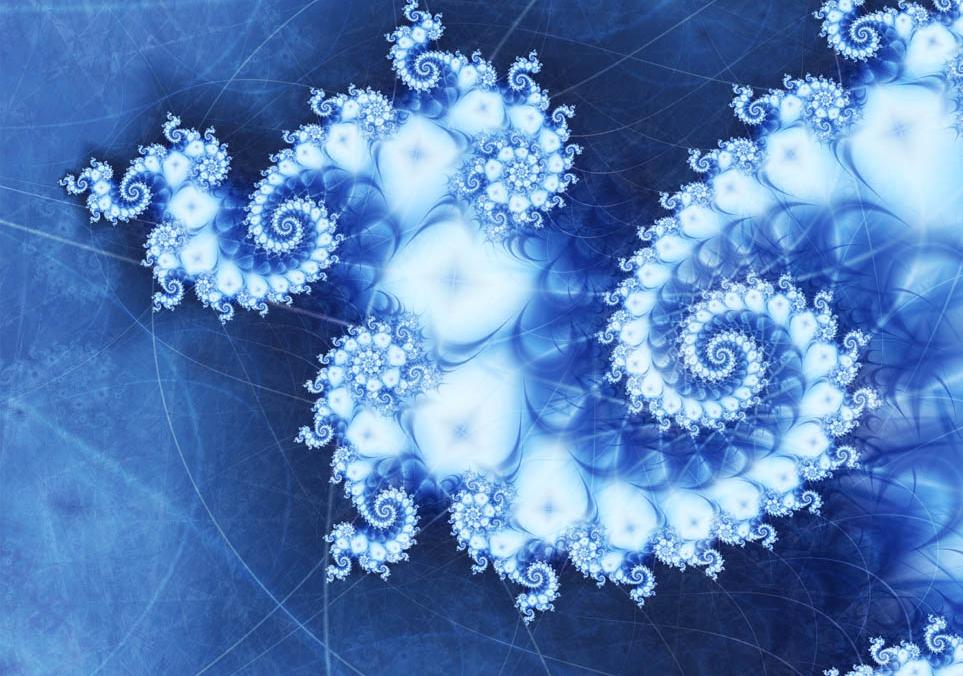Philosophy
 There was a time, not too long ago actually, when complexity and order could only be understood and made sense of in terms of the wisdom, ingenuity and foresight of some intelligent creator. Despite depending on a viciously circular argument leading to an infinite regress (can it get any worse?), the mere appearance of design and contrivance was considered as direct a proof of God's existence as one could possibly demand, providing plenty of emotional support for believers while moving the question one step back and explaining nothing. Still, the idea that complexity could arise out of simplicity, or order out of chaos, wasn't simply ignored: it was considered anathema.
There was a time, not too long ago actually, when complexity and order could only be understood and made sense of in terms of the wisdom, ingenuity and foresight of some intelligent creator. Despite depending on a viciously circular argument leading to an infinite regress (can it get any worse?), the mere appearance of design and contrivance was considered as direct a proof of God's existence as one could possibly demand, providing plenty of emotional support for believers while moving the question one step back and explaining nothing. Still, the idea that complexity could arise out of simplicity, or order out of chaos, wasn't simply ignored: it was considered anathema.
There are those who deny the fact of evolution. They think it impossible that the complexity exhibited by biological organisms could have evolved gradually and piecemeal over millions and billions of years... even though they are fully aware that a single fertilized egg can give rise to a remarkably complex baby only nine months later without any particular guidance or direct intervention.
And this raises the question, among others, of how all the individual cells in an embryo, all genetically identical to each other, somehow 'know' how to differentiate themselves and self-assemble into the different kinds of tissues and organs precisely located in their respective places.
It turns out, as Jim Al-Khalili shows in the following captivating and visually stunning documentary, that the physical world runs according to mathematical principles that make it seem as though order and complexity are almost the inevitable consequences of simplicity and chaos let loose.
 To do this, the documentary seamlessly runs through Alan Turing's work on computational intelligence and morphogenesis, digital Darwinian evolution through natural selection, the physical implications of chaos theory and the butterfly effect, the mathematical insights derived from the Mandelbrot Set, and many other utterly fascinating and independent ideas, all converging on the same basic conclusion:
To do this, the documentary seamlessly runs through Alan Turing's work on computational intelligence and morphogenesis, digital Darwinian evolution through natural selection, the physical implications of chaos theory and the butterfly effect, the mathematical insights derived from the Mandelbrot Set, and many other utterly fascinating and independent ideas, all converging on the same basic conclusion:
Complex systems, and even simple ones, though fundamentally unpredictable (due to the emergence of unexpected properties resulting from the stochasticity of initial conditions and the gradual accumulation of minute irregularities), are nevertheless fully determined and consistent with the laws of physics. In other words, the epistemological impossibility is nevertheless produced by metaphysical necessity.
If you're thinking this poses a threat to the stability of your belief in free will, I'd say you're probably right :)
And if you don't think you could be living in a computer simulation, you have no idea :)
.
- The Origin Of Species And The Historicization Of Science
Today is the 150th anniversary of the publishing of Charles Darwin's On the Origin of Species, a book that changed our view of biology, ourselves, and of science itself. What is interesting about it is that it was a book that was never meant to be...
- Doodling In Math - Spirals, Fibonacci And Plants - 1
Time for some math. No, don't run away! I guarantee even the greatest of mathophobes among you are going to love this, not only because it's a new episode of the Doodling in Math Class series (narrated by the future mother of my children, although...
- Unintelligent Design - The Giraffe's Laryngeal Nerve
The complexity and intricacy of the bodies of living organisms seems like the epitome of science and art coming together in an explosion of perfection. But that appearance is deceiving, and it has given rise to the popular but erroneous belief that such...
- The Cell - The Chemistry Of Life
As we've seen in the first installment of this excellent documentary series on cell biology, it may have taken us a while to get a firm understanding of what cells are and how they work, but once scientists got going, there would be no stopping them....
- Wonders Of The Solar System - Order Out Of Chaos
Taken as a whole, the solar system is a remarkable display of patterns and order: the sun sits at the center, planets rotate around it in regular and predictable orbits, and moons do the same around the planets. The very look of it superficially resembles...
Philosophy
The Secret Life of Chaos
 There was a time, not too long ago actually, when complexity and order could only be understood and made sense of in terms of the wisdom, ingenuity and foresight of some intelligent creator. Despite depending on a viciously circular argument leading to an infinite regress (can it get any worse?), the mere appearance of design and contrivance was considered as direct a proof of God's existence as one could possibly demand, providing plenty of emotional support for believers while moving the question one step back and explaining nothing. Still, the idea that complexity could arise out of simplicity, or order out of chaos, wasn't simply ignored: it was considered anathema.
There was a time, not too long ago actually, when complexity and order could only be understood and made sense of in terms of the wisdom, ingenuity and foresight of some intelligent creator. Despite depending on a viciously circular argument leading to an infinite regress (can it get any worse?), the mere appearance of design and contrivance was considered as direct a proof of God's existence as one could possibly demand, providing plenty of emotional support for believers while moving the question one step back and explaining nothing. Still, the idea that complexity could arise out of simplicity, or order out of chaos, wasn't simply ignored: it was considered anathema.There are those who deny the fact of evolution. They think it impossible that the complexity exhibited by biological organisms could have evolved gradually and piecemeal over millions and billions of years... even though they are fully aware that a single fertilized egg can give rise to a remarkably complex baby only nine months later without any particular guidance or direct intervention.
And this raises the question, among others, of how all the individual cells in an embryo, all genetically identical to each other, somehow 'know' how to differentiate themselves and self-assemble into the different kinds of tissues and organs precisely located in their respective places.
It turns out, as Jim Al-Khalili shows in the following captivating and visually stunning documentary, that the physical world runs according to mathematical principles that make it seem as though order and complexity are almost the inevitable consequences of simplicity and chaos let loose.
 To do this, the documentary seamlessly runs through Alan Turing's work on computational intelligence and morphogenesis, digital Darwinian evolution through natural selection, the physical implications of chaos theory and the butterfly effect, the mathematical insights derived from the Mandelbrot Set, and many other utterly fascinating and independent ideas, all converging on the same basic conclusion:
To do this, the documentary seamlessly runs through Alan Turing's work on computational intelligence and morphogenesis, digital Darwinian evolution through natural selection, the physical implications of chaos theory and the butterfly effect, the mathematical insights derived from the Mandelbrot Set, and many other utterly fascinating and independent ideas, all converging on the same basic conclusion:Complex systems, and even simple ones, though fundamentally unpredictable (due to the emergence of unexpected properties resulting from the stochasticity of initial conditions and the gradual accumulation of minute irregularities), are nevertheless fully determined and consistent with the laws of physics. In other words, the epistemological impossibility is nevertheless produced by metaphysical necessity.
If you're thinking this poses a threat to the stability of your belief in free will, I'd say you're probably right :)
And if you don't think you could be living in a computer simulation, you have no idea :)
.
- The Origin Of Species And The Historicization Of Science
Today is the 150th anniversary of the publishing of Charles Darwin's On the Origin of Species, a book that changed our view of biology, ourselves, and of science itself. What is interesting about it is that it was a book that was never meant to be...
- Doodling In Math - Spirals, Fibonacci And Plants - 1
Time for some math. No, don't run away! I guarantee even the greatest of mathophobes among you are going to love this, not only because it's a new episode of the Doodling in Math Class series (narrated by the future mother of my children, although...
- Unintelligent Design - The Giraffe's Laryngeal Nerve
The complexity and intricacy of the bodies of living organisms seems like the epitome of science and art coming together in an explosion of perfection. But that appearance is deceiving, and it has given rise to the popular but erroneous belief that such...
- The Cell - The Chemistry Of Life
As we've seen in the first installment of this excellent documentary series on cell biology, it may have taken us a while to get a firm understanding of what cells are and how they work, but once scientists got going, there would be no stopping them....
- Wonders Of The Solar System - Order Out Of Chaos
Taken as a whole, the solar system is a remarkable display of patterns and order: the sun sits at the center, planets rotate around it in regular and predictable orbits, and moons do the same around the planets. The very look of it superficially resembles...
